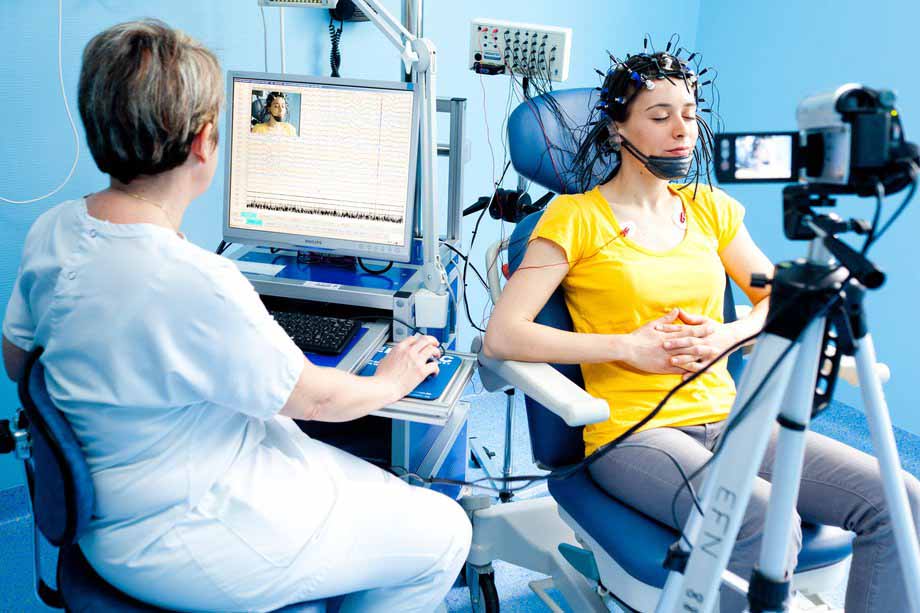Shri Rishi Psychiatry Clinic - Electro Encephalogram (EEG) Center
What is an Electro Encephalogram (EEG)?
An electroencephalogram (EEG) is a test used to evaluate the electrical activity in the brain. Brain cells communicate with each other through electrical impulses. An EEG can be used to help detect potential problems associated with this activity.
An EEG tracks and records brain wave patterns. Small flat metal discs called electrodes are attached to the scalp with wires. The electrodes analyze the electrical impulses in the brain and send signals to a computer that records the results.
The electrical impulses in an EEG recording look like wavy lines with peaks and valleys. These lines allow doctors to quickly assess whether there are abnormal patterns. Any irregularities may be a sign of seizures or other brain disorders.

How Does it Work?
Your brain runs the show. Think of the last time you tried to solve a crossword puzzle or started to learn a new language. Recall the last time you woke up in the middle of a weird dream or needed to find your way in a city you have never been before.
As you think, dream, see, and sense, your brain is constantly active, absorbing all information, compacting and re-connecting existing data, and integrating everything into a consistent experience. For you, that experience constitutes your reality.
Your brain is alive. Your brain shapes how you see your environment, filters or highlights objects and information most relevant to you. It creates its own stories based on your thoughts, emotions, desires and experiences, ultimately driving your behavior.
When an Electro Encephalogram (EEG) is used
An EEG can be used to help diagnose and monitor a number of conditions affecting the brain.
It may help identify the cause of certain symptoms – such as seizures (fits) or memory problems – or find out more about a condition you’ve already been diagnosed with.
The main use of an EEG is to detect and investigate epilepsy, a condition that causes repeated seizures. An EEG will help your doctor identify the type of epilepsy you have, what may be triggering your seizures and how best to treat you.
How an Electro Encephalogram (EEG) is carried out
There are several different ways an EEG recording can be taken. The clinical neurophysiologist will explain the procedure to you and can answer any questions you have.
You’ll also be asked whether you give permission (consent) for the various parts of the test to be carried out.
Before the test starts, your scalp will be cleaned and about 20 small sensors called electrodes will be attached using a special glue or paste. These are connected by wires to an EEG recording machine.
Routine EEG recordings usually take 20 to 40 minutes, although a typical appointment will last about an hour, including some preparation time at the beginning and some time at the end.
Other types of EEG recording may take longer.
What happens after an EEG
When the test is finished, the electrodes will be removed and your scalp will be cleaned. Your hair will probably still be a bit sticky and messy afterwards, so you may want to wash it when you get home.
You can usually go home soon after the test is finished and return to your normal activities. You might feel tired after the test, particularly if you had a sleep or sleep-deprived EEG, so you may want someone to pick you up from hospital.
You normally will not get your results on the same day. The recordings will need to be analysed first and will be sent to the doctor who requested the test. They can discuss the results with you a few days or weeks later.
